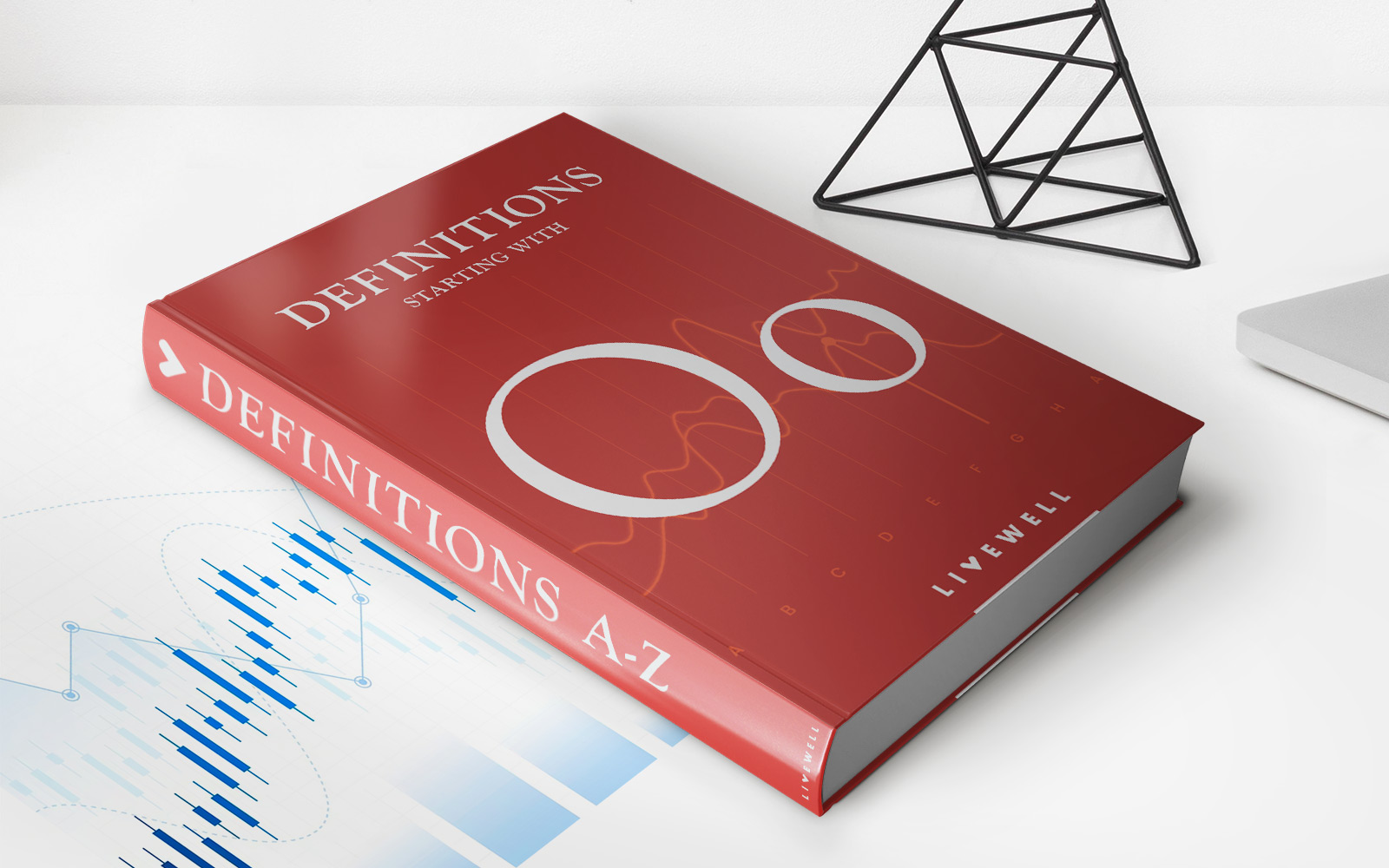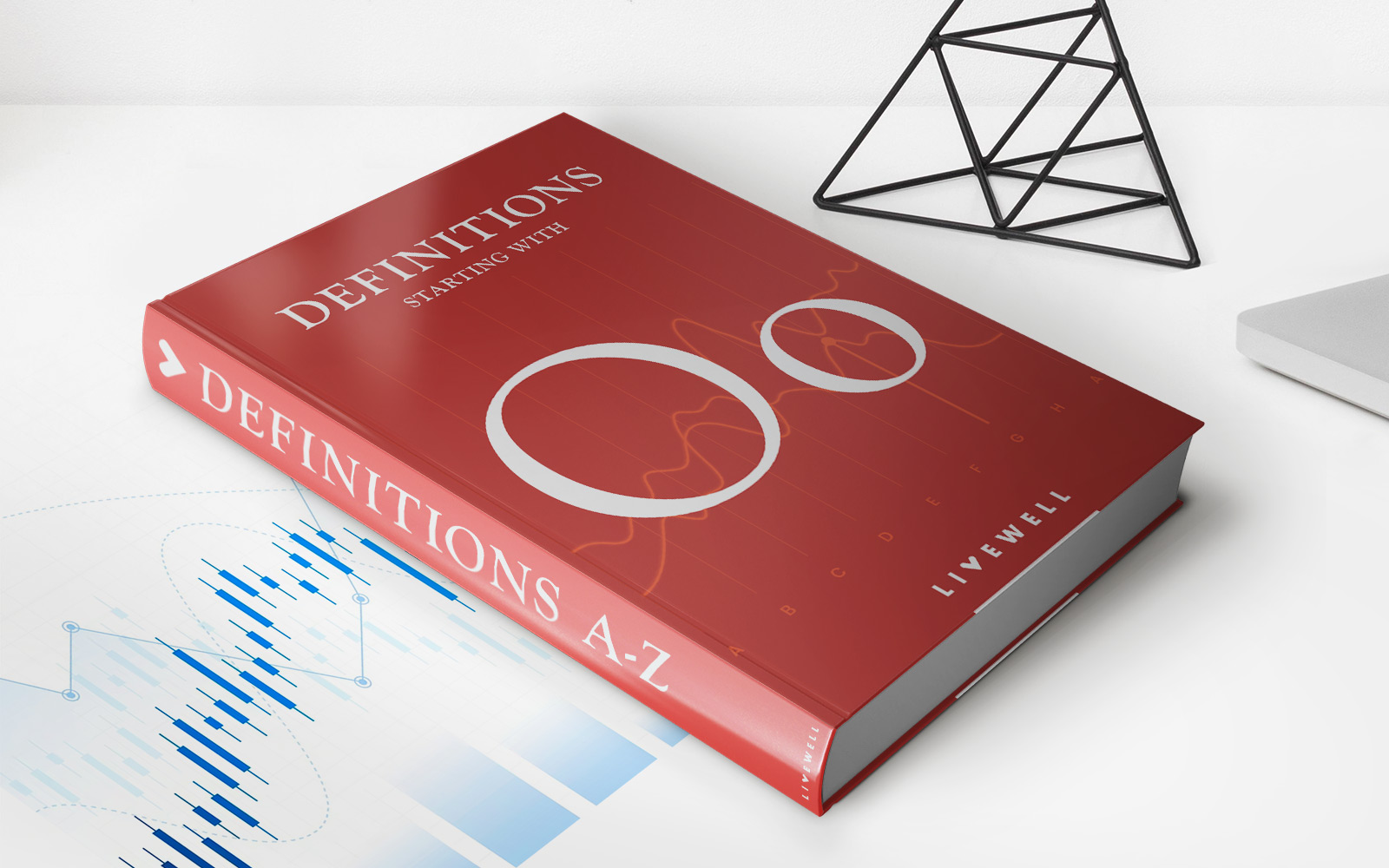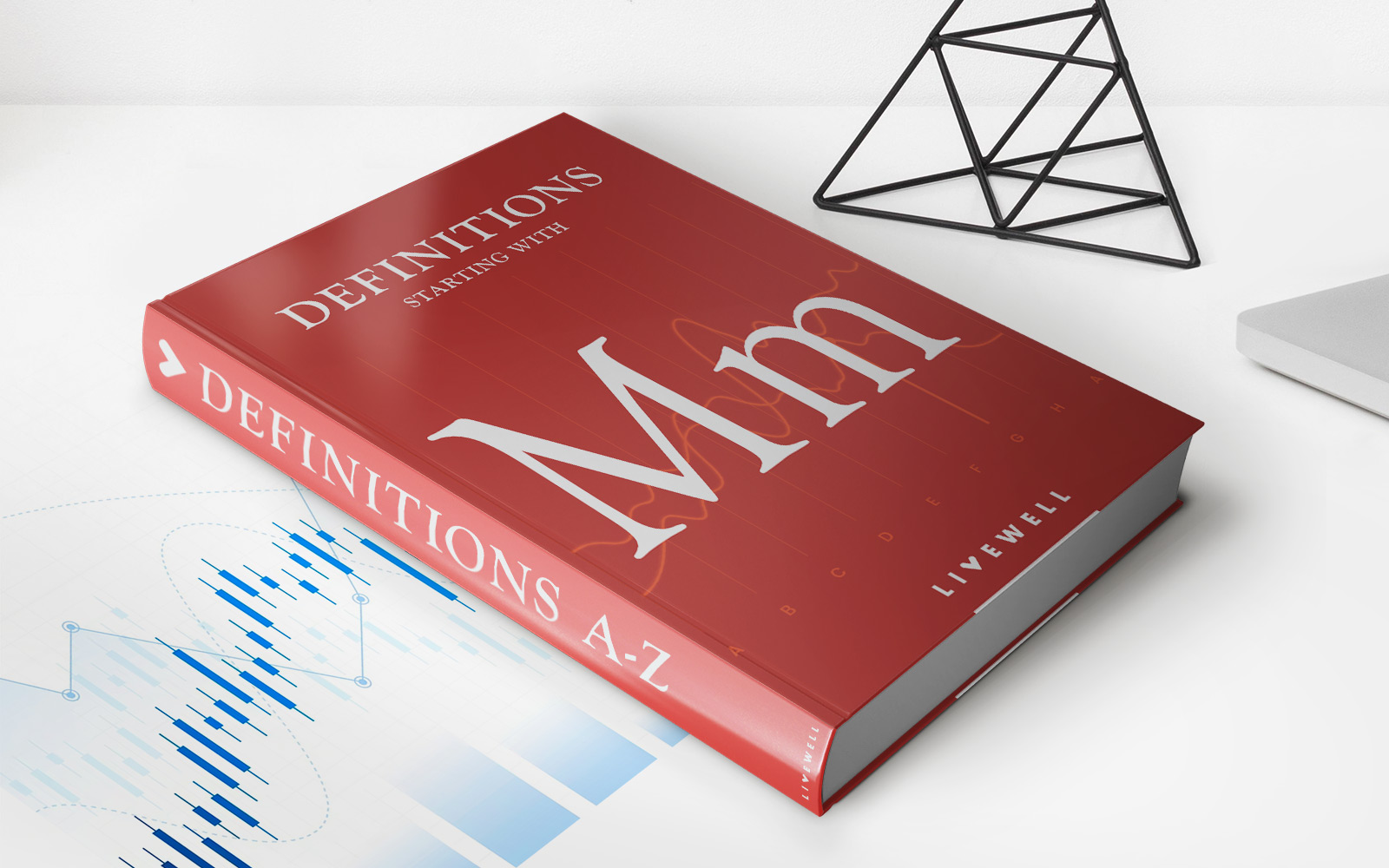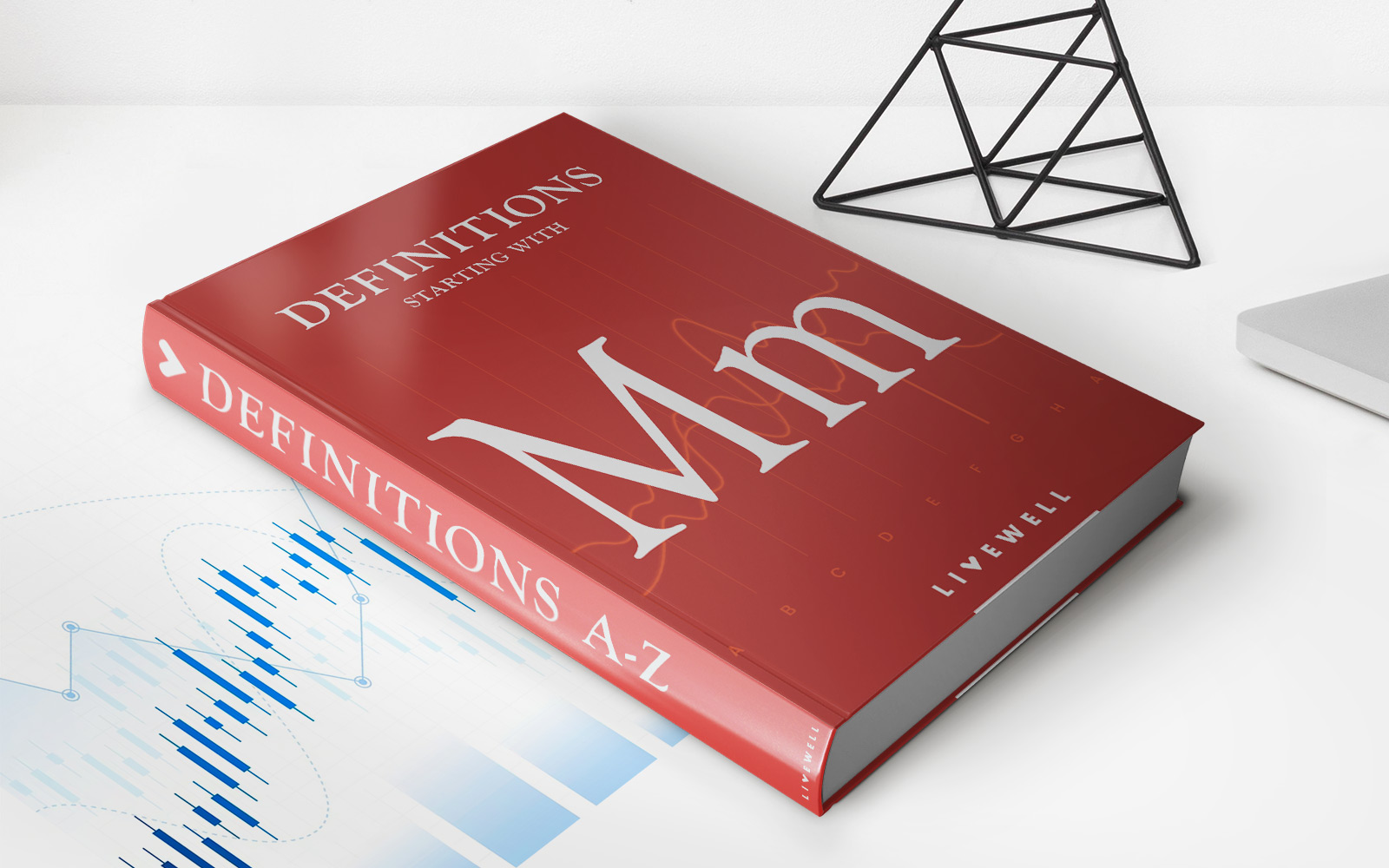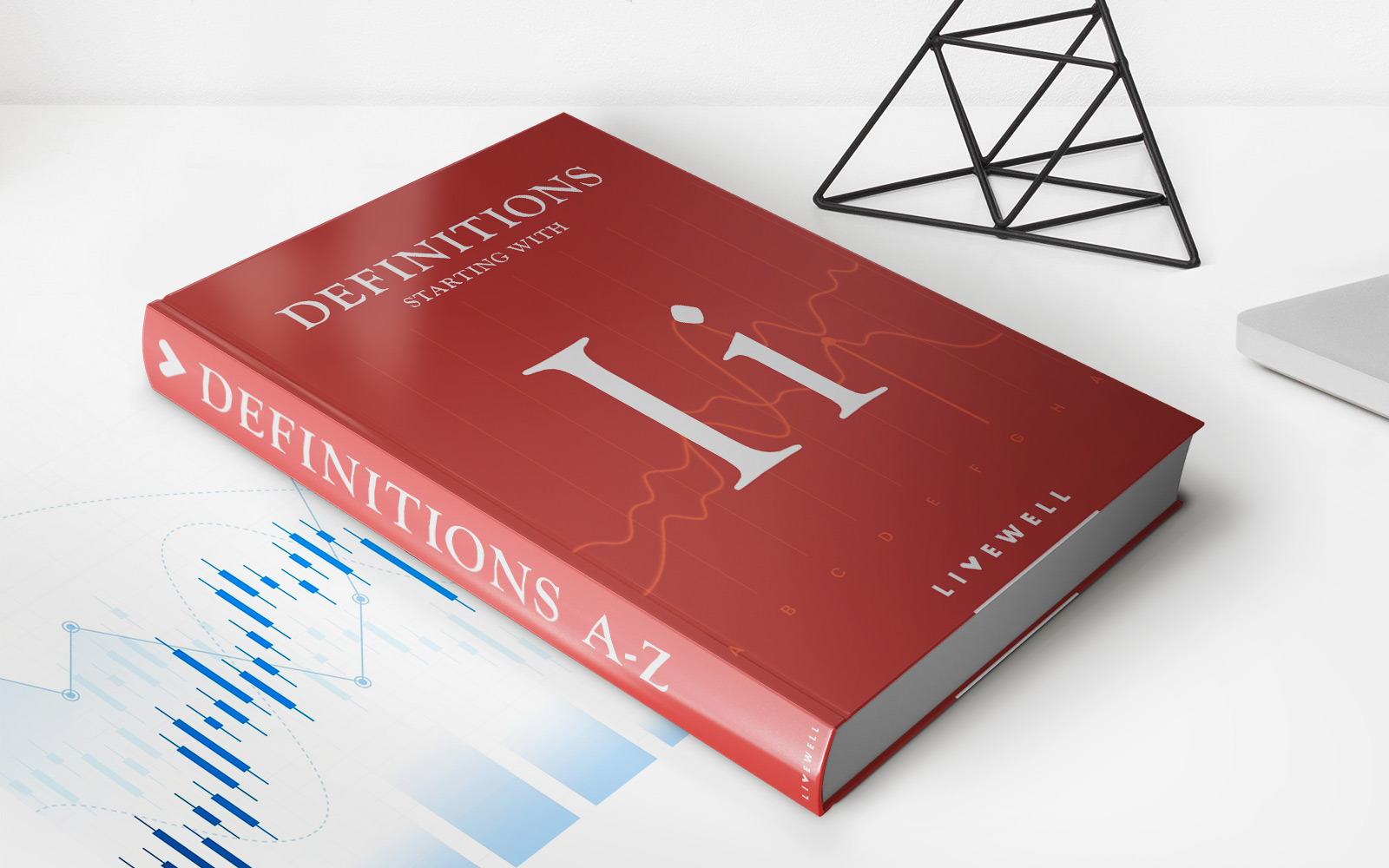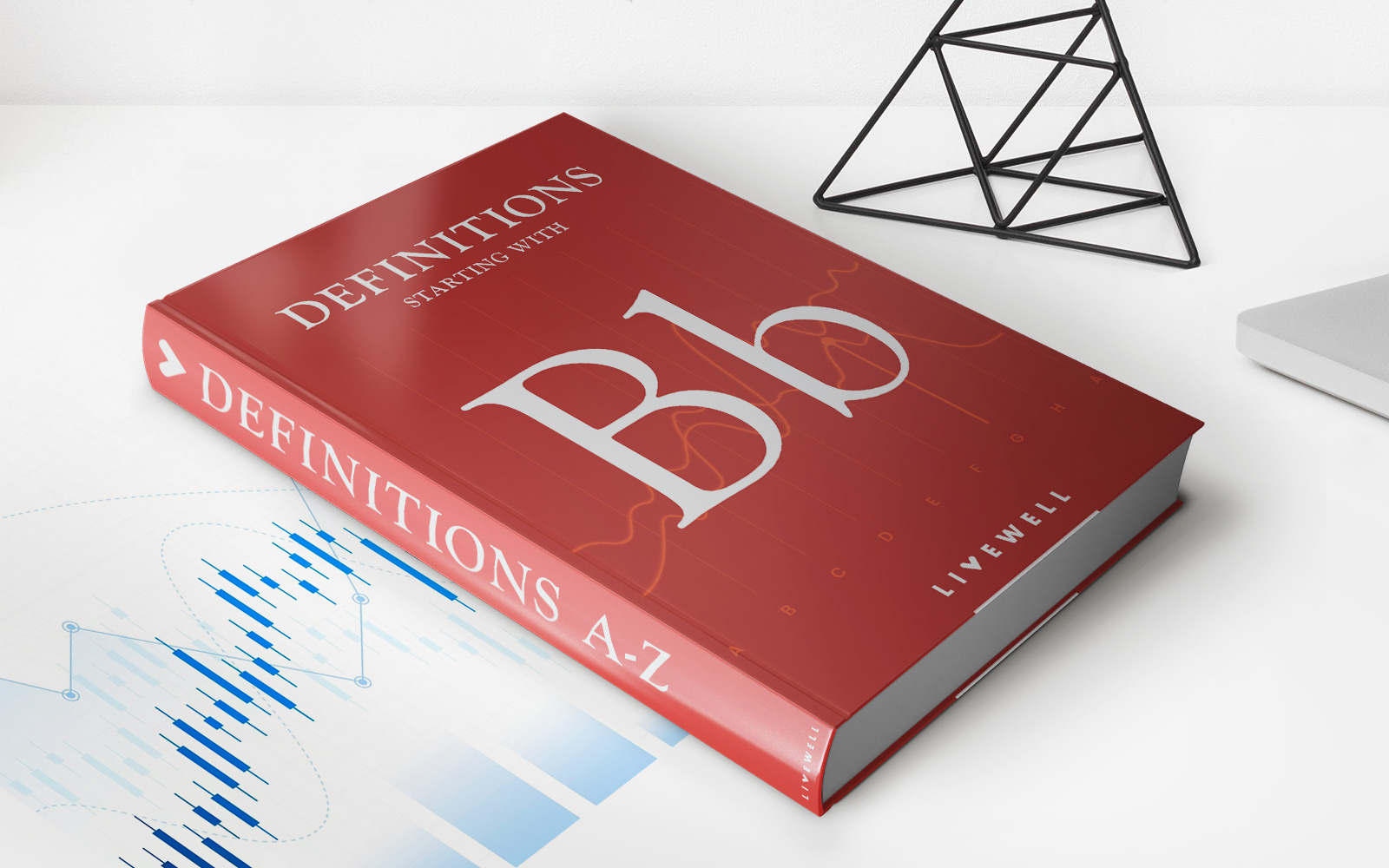

Finance
What Is Open-End Credit
Modified: March 1, 2024
Learn about open-end credit and how it can benefit your personal finance. Explore the flexibility and convenience of open-end credit options.
(Many of the links in this article redirect to a specific reviewed product. Your purchase of these products through affiliate links helps to generate commission for LiveWell, at no extra cost. Learn more)
Table of Contents
- Introduction
- Definition of Open-End Credit
- How Open-End Credit Works
- Types of Open-End Credit
- Pros and Cons of Open-End Credit
- Factors to Consider Before Using Open-End Credit
- Difference Between Open-End Credit and Closed-End Credit
- Common Examples of Open-End Credit
- Regulations and Consumer Protection for Open-End Credit
- Conclusion
Introduction
When it comes to managing our finances, having access to credit can be a valuable tool. Credit allows us to make purchases and pay for them later, providing financial flexibility and convenience. One type of credit that many people are familiar with is open-end credit.
Open-end credit, also known as revolving credit, is a form of credit that allows borrowers to repeatedly borrow money up to a certain limit. It differs from closed-end credit, such as a mortgage or auto loan, which typically has a fixed repayment term and amount.
In this article, we will explore the world of open-end credit, examining what it is, how it works, the different types available, and the pros and cons associated with using open-end credit. We will also discuss factors to consider before using open-end credit, highlight the differences between open-end and closed-end credit, and provide common examples of open-end credit.
Furthermore, as with any financial product, there are regulations and consumer protection measures in place to safeguard borrowers. We will delve into the regulatory landscape surrounding open-end credit and the important consumer protection provisions that are in place.
Whether you are a seasoned credit user or just starting to explore credit options, understanding the ins and outs of open-end credit can empower you to make informed financial decisions. So, let’s dive into the world of open-end credit and discover what it has to offer!
Definition of Open-End Credit
Open-end credit is a type of credit arrangement that allows individuals or businesses to borrow money up to a specific limit and repay it over time. With open-end credit, borrowers have the flexibility to borrow and repay as needed, as long as they stay within the credit limit set by the lender.
This type of credit is often associated with credit cards, lines of credit, and home equity lines of credit (HELOCs). Unlike closed-end credit, which has a fixed repayment term and amount, open-end credit does not have a predetermined repayment schedule. Instead, borrowers have the freedom to make minimum payments and carry a balance from month to month, paying interest on the outstanding balance.
Open-end credit agreements typically have an established credit limit, which is the maximum amount that can be borrowed at any given time. The credit limit is determined based on various factors, including the borrower’s credit history, income, and financial stability. As borrowers make repayments, the available credit is replenished, allowing them to borrow again, up to the credit limit.
One of the key features of open-end credit is its revolving nature. Unlike closed-end credit, where the debt is paid off in full over a predetermined period, open-end credit allows borrowers to carry a balance and make minimum payments each month. This flexibility can be both beneficial and potentially risky, as it gives borrowers the freedom to manage their cash flow but also exposes them to accumulating interest charges if they carry a balance for an extended period.
It’s important to note that open-end credit agreements often come with an annual percentage rate (APR), which represents the cost of borrowing over a year. The APR takes into account not only the interest rate but also any fees or charges associated with the credit arrangement. Understanding the APR is crucial for borrowers, as it helps them evaluate the true cost of borrowing and compare different credit offers.
Overall, open-end credit provides individuals and businesses with the flexibility to borrow and repay funds as needed within a predetermined credit limit. Its revolving nature and minimum payment requirements can offer convenience but also require responsible financial management to avoid excessive debt and interest charges.
How Open-End Credit Works
Understanding how open-end credit works is essential for anyone considering using this type of credit. Here’s a breakdown of the key elements and steps involved in the functioning of open-end credit:
- Application and Approval: To access open-end credit, individuals or businesses typically need to apply for a credit account. This involves submitting an application to a lender, who will assess their creditworthiness based on factors such as credit history, income, and debt-to-income ratio. If approved, a credit limit will be assigned to the borrower.
- Borrowing: Once the credit account is approved, the borrower can start using the available credit. They can make purchases or withdraw cash up to the assigned credit limit. Common forms of open-end credit include credit cards and lines of credit.
- Repayment Options: With open-end credit, borrowers have flexibility in how they choose to repay the borrowed funds. There are typically minimum payment requirements, which can be a fixed amount or a percentage of the outstanding balance. While making minimum payments helps avoid late fees and penalties, carrying a balance and making minimum payments also means accruing interest charges.
- Interest Charges: Interest charges are a significant aspect of open-end credit. When borrowers carry a balance from month to month, interest is charged on the outstanding amount. The interest rate, usually expressed as an annual percentage rate (APR), determines the cost of borrowing. It’s important to carefully review the interest rate associated with the credit account, as it directly impacts the overall cost of borrowing.
- Credit Availability: As borrowers make repayments, the available credit is replenished. This means that borrowers can continue to borrow against their credit limit as long as they have available credit. It’s important to manage credit utilization to ensure that it remains within a reasonable range and does not negatively impact credit scores.
- Fee Structure: Open-end credit accounts may have associated fees, such as an annual fee, balance transfer fee, or cash advance fee. These fees can vary depending on the specific credit account and the lender. It’s crucial to review the fee structure associated with the credit account and understand how it may impact overall borrowing costs.
Overall, open-end credit provides borrowers with a flexible borrowing option. It offers convenience and the ability to access funds when needed, but it also requires responsible financial management to avoid incurring excessive interest charges and debt. Understanding the borrowing and repayment process is essential for utilizing open-end credit effectively.
Types of Open-End Credit
Open-end credit encompasses various types of credit arrangements that offer borrowers the flexibility to borrow and repay funds within a credit limit. Here are some common types of open-end credit:
- Credit Cards: Credit cards are one of the most well-known types of open-end credit. They allow cardholders to make purchases up to a predetermined credit limit. Cardholders can choose to pay off the balance in full each month or make minimum payments and carry a balance, incurring interest charges on the outstanding amount.
- Lines of Credit: A line of credit is a flexible credit arrangement that provides borrowers with a predetermined credit limit. Borrowers can access funds from the line of credit as needed and repay them over time. It can be secured or unsecured. A secured line of credit is backed by collateral, such as a home or savings account, while an unsecured line of credit does not require collateral.
- Home Equity Line of Credit (HELOC): A HELOC is a type of open-end credit that allows homeowners to borrow against the equity in their homes. It functions like a line of credit, with a predetermined credit limit based on the home’s value. Borrowers can use the funds for various purposes, such as home improvements or debt consolidation. The home serves as collateral for the HELOC.
- Retail Store Credit Cards: Many retail stores offer their own branded credit cards, which provide open-end credit to customers. These cards often come with specific rewards or discounts for purchases made at the respective store. The credit limit is typically tied to the customer’s creditworthiness and can only be used at the specific store or chain.
- Gas Station Credit Cards: Gas station credit cards are similar to retail store credit cards but are specific to purchasing fuel. These cards often offer rewards or discounts on gas purchases and can only be used at affiliated gas stations. The credit limit is determined based on the customer’s creditworthiness.
These examples illustrate the broad range of open-end credit options available to borrowers. Each type of credit has its own terms, fees, and interest rates. It’s important to carefully review the terms and conditions of any open-end credit product before applying to understand how it fits into your financial goals and circumstances.
Pros and Cons of Open-End Credit
Open-end credit can offer numerous benefits, but it also comes with potential drawbacks. Let’s explore the pros and cons of utilizing this type of credit:
Pros:
- Flexibility: One of the major advantages of open-end credit is the flexibility it provides. Borrowers can access funds as needed, up to their credit limit, and make repayments based on their financial situation. This flexibility can make it easier to handle unexpected expenses or manage cash flow.
- Convenience: Open-end credit, particularly credit cards, offers convenience in making purchases. Cardholders can simply swipe their card or make online transactions without the need for cash. This convenience can be especially beneficial for everyday expenses, travel, and online shopping.
- Building Credit: Responsible use of open-end credit can help individuals build a positive credit history. Making timely payments and managing credit utilization can improve credit scores over time, making it easier to qualify for future loans or credit accounts with favorable terms.
- Rewards and Perks: Many open-end credit products, such as credit cards, offer rewards programs that allow cardholders to earn cash back, travel points, or other incentives on their purchases. These rewards can add value and help offset some of the costs associated with credit utilization.
Cons:
- Interest Charges: One of the significant drawbacks of open-end credit is the potential for interest charges. Carrying a balance and making only minimum payments can result in accumulating interest, which can significantly increase the total cost of borrowing.
- Overuse and Debt Accumulation: The flexibility of open-end credit can lead to overuse and the accumulation of debt. Without careful budgeting and financial management, borrowers may find themselves with a high level of debt that becomes difficult to repay within a reasonable timeframe.
- Fees and Penalties: Open-end credit accounts often come with various fees, such as annual fees, late payment fees, or cash advance fees. These fees can add up and impact the overall cost of borrowing. Additionally, late or missed payments can result in penalties, negatively impacting credit scores.
- Temptation for Impulsive Spending: Easy access to open-end credit, especially credit cards, can tempt individuals into impulsive spending. Without discipline and budgeting, this can lead to financial strain and difficulty in managing debt effectively.
- Impact on Credit Scores: While responsible use of open-end credit can help improve credit scores, misuse or excessive debt can have the opposite effect. High credit utilization, late payments, or defaulting on the credit account can result in a negative impact on credit scores, making it more challenging to secure future loans or credit.
It’s crucial for individuals considering open-end credit to carefully weigh these pros and cons and assess their own financial situation and borrowing needs. Responsible usage, budgeting, and regular monitoring of credit accounts are essential for maximizing the benefits and minimizing the potential drawbacks of open-end credit.
Factors to Consider Before Using Open-End Credit
Before utilizing open-end credit, it’s important to consider several factors to ensure it aligns with your financial goals and circumstances. Here are some key considerations:
- Financial Stability: Assess your financial stability and ability to handle additional debt. Consider your income, expenses, and any existing financial obligations. Opening a new line of credit should not put you at risk of overextending your finances or impacting your ability to meet your financial obligations.
- Interest Rates and Fees: Understand the interest rates, fees, and charges associated with the open-end credit product you’re considering. Compare different offers to find the most favorable terms. High interest rates or excessive fees can significantly increase the cost of borrowing and impact your financial well-being.
- Credit Limit: Take into account the credit limit offered by the lender and how it aligns with your borrowing needs. Consider whether the credit limit is sufficient to cover your expenses or if it may tempt you to overspend and accumulate excessive debt.
- Repayment Plan: Develop a clear repayment plan before utilizing open-end credit. Consider how much you can comfortably afford to repay each month and how long it will take you to pay off the balance. Making only minimum payments can prolong the repayment period and result in higher interest costs.
- Credit Score Impact: Understand how using open-end credit will affect your credit score. Opening a new credit account may temporarily lower your score, but responsible repayment can help improve it over time. Assess how potential credit utilization and payment history may impact your creditworthiness.
- Financial Goals: Evaluate how utilizing open-end credit aligns with your short-term and long-term financial goals. Consider whether the credit will help you achieve those goals or if it may hinder your progress. Be mindful of the impact on your overall financial plan.
- Borrowing Alternatives: Explore other borrowing alternatives before committing to open-end credit. Depending on your needs, closed-end credit options like personal loans or home equity loans may offer more favorable terms or lower interest rates. Compare different credit products to find the best fit for your specific borrowing requirements.
- Financial Self-Discipline: Honest self-evaluation of your financial self-discipline is essential. Assess your ability to manage credit responsibly, make timely payments, and avoid impulse purchases. Using open-end credit requires financial self-control to maintain a healthy financial position.
By carefully considering these factors and assessing your financial situation, you can make an informed decision about whether open-end credit is the right choice for you. Open-end credit can be a valuable tool when used responsibly and aligned with your financial goals.
Difference Between Open-End Credit and Closed-End Credit
Open-end credit and closed-end credit are two distinct types of credit arrangements, each with its own characteristics and features. Understanding the difference between these two types of credit is crucial for individuals considering borrowing options. Here are the key differentiating factors:
Definition:
Open-end credit, also known as revolving credit, allows borrowers to repeatedly borrow money up to a specific credit limit and make repayments as they go. Closed-end credit, on the other hand, involves borrowing a fixed amount of money for a specific purpose, with a predetermined repayment term and fixed monthly payments.
Repayment Structure:
Open-end credit offers a revolving repayment structure, allowing borrowers to make minimum payments and carry forward their balance from month to month. They have the flexibility to borrow and repay as needed, as long as they stay within the assigned credit limit. Closed-end credit has a fixed repayment structure, with a specific period to repay the borrowed amount and set monthly payments that include both principal and interest.
Interest Charging:
In open-end credit, interest charges are only applied to the outstanding balance if the borrower carries a balance from month to month. Interest is calculated based on the average daily balance and added to the total amount owed. In closed-end credit, interest charges are calculated based on the loan’s fixed interest rate and are typically spread out evenly over the loan’s term.
Flexibility:
Open-end credit offers more flexibility compared to closed-end credit. Borrowers can borrow funds, repay them partially or in full, and borrow again, all within the assigned credit limit. Closed-end credit does not provide the same level of flexibility once the loan amount is disbursed and the repayment term begins.
Purpose of Borrowing:
Open-end credit is often used for ongoing or varying expenses, such as everyday purchases, emergencies, or cash flow management. Closed-end credit is typically used for specific purposes, such as purchasing a house or a car, financing an education, or undertaking a home improvement project.
Collateral:
Open-end credit can be both secured and unsecured. Secured open-end credit requires collateral, such as a home or a savings account, to back the credit line. Unsecured open-end credit does not require collateral. Closed-end credit can be either secured or unsecured, depending on the specific loan terms and requirements.
Understanding the differences between open-end credit and closed-end credit is essential for borrowers. It allows individuals to choose the most suitable credit arrangement for their specific needs and financial goals. Consider factors such as repayment structure, interest charging, flexibility, purpose of borrowing, collateral requirements, and overall financial stability when deciding between open-end credit and closed-end credit.
Common Examples of Open-End Credit
Open-end credit encompasses various financial products that provide borrowers with the ability to borrow funds up to a set credit limit. Here are some common examples of open-end credit:
- Credit Cards: Credit cards are one of the most prevalent forms of open-end credit. They allow users to make purchases using a line of credit up to a predetermined limit. Cardholders can choose to pay off the balance in full each month or make minimum payments and carry a balance, incurring interest charges on the outstanding amount.
- Home Equity Lines of Credit (HELOCs): A HELOC is a revolving line of credit that uses the borrower’s home equity as collateral. It allows homeowners to borrow funds up to a specific limit, with the home serving as collateral. HELOCs are commonly used for home improvements, debt consolidation, or other financial needs.
- Personal Lines of Credit: Personal lines of credit are unsecured credit lines that can be used for various purposes. They do not require collateral and typically have higher interest rates compared to secured lines of credit. Personal lines of credit offer flexibility in borrowing and repaying funds as needed.
- Overdraft Protection: Some banking institutions offer overdraft protection as a form of open-end credit. This feature allows individuals to overdraw funds from their checking account up to a certain limit. The overdrafted amount is treated as a loan and must be repaid along with any applicable fees or interest charges.
- Retail Store Credit Cards: Many retail stores offer their own branded credit cards, providing customers with open-end credit specific to that store or chain. These credit cards often come with rewards or discounts for purchases made at the respective store. The credit limit is typically based on the applicant’s creditworthiness.
- Gas Station Credit Cards: Gas station credit cards are similar to retail store credit cards but are specific to purchasing fuel. These cards often provide rewards or discounts on gas purchases and can only be used at affiliated gas stations. The credit limit is determined based on the applicant’s creditworthiness.
These examples illustrate the common forms of open-end credit available to borrowers. Each type of open-end credit has its own terms, fees, and limitations. It’s essential for individuals to consider their financial needs, repayment capabilities, and overall financial goals when choosing the most suitable open-end credit product.
Regulations and Consumer Protection for Open-End Credit
Open-end credit is subject to various regulations and consumer protection measures to ensure fair practices and protect borrowers. These regulations aim to promote transparency, prevent predatory lending, and provide avenues for dispute resolution. Here are some key regulations and consumer protection laws pertaining to open-end credit:
- Truth in Lending Act (TILA): Enacted in the United States, TILA requires lenders to disclose important terms and costs associated with credit offers. This includes details such as the annual percentage rate (APR), finance charges, and other fees. TILA ensures clear and accurate information is provided to borrowers, allowing them to make informed decisions.
- Credit Card Accountability, Responsibility, and Disclosure Act (CARD Act): The CARD Act imposes regulations on credit card issuers, aimed at protecting consumer rights. It includes provisions such as restrictions on sudden interest rate increases, clearer disclosure of terms and conditions, and limitations on certain fees. The CARD Act provides safeguards against unfair practices and encourages transparent credit card agreements.
- Consumer Financial Protection Bureau (CFPB): The CFPB is a regulatory agency that oversees and enforces consumer financial protection laws. It works to ensure fair treatment of consumers in financial transactions, including open-end credit. The CFPB provides educational resources, handles consumer complaints, and implements regulations to promote transparency and fairness in the credit industry.
- Fair Credit Reporting Act (FCRA): The FCRA regulates the collection, dissemination, and use of consumer credit information. It grants consumers the right to access and dispute their credit reports, ensuring accurate reporting and protection against identity theft. The FCRA promotes fair practices in credit reporting and protects the rights of borrowers.
- Fair Debt Collection Practices Act (FDCPA): The FDCPA establishes rules and guidelines for debt collection practices. It prohibits debt collectors from engaging in abusive or unfair practices when attempting to collect debts, ensuring consumers are treated with respect. The FDCPA outlines requirements for debt collectors, including proper disclosure and limitations on harassment.
These regulations and consumer protection laws provide a framework for responsible lending and borrowing. They promote transparency, fair practices, and the protection of consumer rights. Borrowers should familiarize themselves with these regulations and laws to understand their rights and seek assistance if they encounter any issues with their open-end credit arrangements.
Conclusion
Open-end credit plays a significant role in our financial lives, offering borrowers the flexibility and convenience to access funds within a predetermined credit limit. Whether through credit cards, lines of credit, or home equity lines of credit (HELOCs), open-end credit provides opportunities for individuals and businesses to manage their expenses, handle emergencies, and achieve their financial goals.
While open-end credit offers numerous benefits, it is essential to approach it with caution and responsible financial management. Understanding the terms, interest charges, and potential fees associated with open-end credit products is crucial for making informed decisions and avoiding excessive debt. Regular monitoring of credit accounts and staying within one’s financial means are important factors in utilizing open-end credit responsibly.
Additionally, regulatory bodies, such as the Truth in Lending Act (TILA), the Consumer Financial Protection Bureau (CFPB), and the Fair Credit Reporting Act (FCRA), enforce regulations and protect consumers from unfair lending practices. These laws promote transparency, fair treatment, and access to accurate credit information.
Before utilizing open-end credit, evaluate your financial stability, repayment ability, and overall financial goals. Consider factors such as interest rates, fees, credit limits, and the impact on your credit score. By carefully considering these aspects, individuals can make sound decisions that align with their financial needs and objectives.
Open-end credit can be a valuable financial tool when used responsibly and in line with one’s financial circumstances. It provides the convenience and flexibility to manage expenses and meet financial goals. By understanding the nuances of open-end credit and taking control of your borrowing habits, you can leverage it to your advantage while maintaining financial well-being.
In conclusion, open-end credit offers possibilities and convenience but should be approached with caution. With careful consideration, responsible borrowing, and adherence to regulatory guidelines, individuals can harness the benefits of open-end credit while safeguarding their financial stability.


